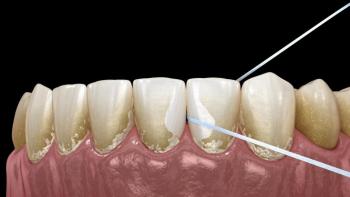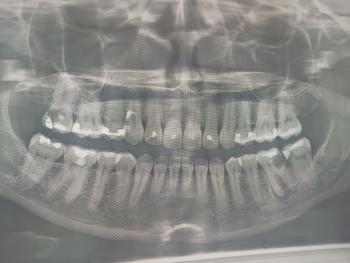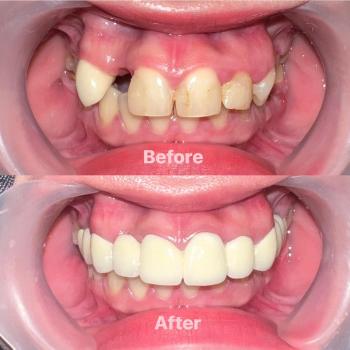Healthy Teeth, Happy Life.
The Hidden Blueprint: How Neglecting Baby Teeth is Shaping a Generation of Filipino Smiles
Language :

Topics:
The Story of Baby Jaime and His Mother, Ana
In a cramped one-room house in a Manila informal settlement, 16-year-old Ana tries to soothe her 2-year-old son, Jaime. He’s been crying for hours, refusing to eat. His front teeth are stained brown and black, a condition many in their community call "ngipin sa bote" (bottle teeth).
Ana is a child raising a child. She left school, the father is gone, and her days are a cycle of odd jobs and survival. When Jaime cries, a bottle of sugary juice is the fastest way to quiet him. The concept of brushing his teeth feels like a luxury next to the pressures of finding their next meal.
She’s heard the old saying: "’Yang ngipin ng bata, malalaglag din ’yan." (Those baby teeth will just fall out anyway.) So, she ignores the decay, believing the pain is temporary and the teeth are disposable.
She doesn't know that the damage is already spreading beneath the surface.
The Unseen Disaster: How a Baby Cavity Becomes a Permanent Problem
The common belief that baby teeth don't matter is one of the most dangerous myths in oral health. Here’s the biological truth Ana doesn't know:
Inside Jaime’s tiny jaw, just beneath the roots of his rotting baby teeth, the crowns of his permanent adult teeth are already forming, waiting for their turn.
The infection from his severe cavities isn't staying put. It’s traveling down the roots of his baby teeth and directly attacking the developing enamel of his permanent teeth. The consequence?
-
Weak Foundation: The adult teeth may erupt already discolored (yellow or brown) and weak, prone to cavities from day one.
-
Misalignment: Baby teeth act as placeholders. If Jaime’s teeth are extracted early or lost to decay, the adult teeth will erupt crooked, crowded, or even impacted, leading to complex orthodontic issues later.
-
Chronic Pain & Infection: The constant infection can affect his overall health, leading to poor nutrition, sleep deprivation, and difficulties concentrating when he starts school.
Analyzing the Situation in the Philippines: A Perfect Storm
The story of Ana and Jaime is not an exception; it's a symptom of a larger crisis. The data points to a perfect storm:
-
High Adolescent Birth Rate: The Philippines has one of the highest teenage pregnancy rates in Southeast Asia. Young mothers like Ana often lack the financial stability, education, and social support to prioritize non-emergency health care like dentistry.
-
Poverty and Access: For low-income families, dental care is a catastrophic expense. A preventive check-up is sacrificed for immediate needs like food and shelter.
-
Cultural Myths: The pervasive belief that baby teeth are disposable creates a cycle of neglect that spans generations.
-
Dietary Shifts: The widespread availability and low cost of sugary drinks, biscuits, and processed foods make them a common pacifier and meal for children, directly fueling tooth decay.
This isn't just about cavities; it's about setting up a generation for a lifetime of health disparities, dental expenses, and lost confidence.
Breaking the Cycle: A Blueprint for Change
The solution requires a multi-layered approach, targeting both awareness and access.
For Parents and Guardians (The First Line of Defense):
-
Knowledge is Power: Understand that baby teeth are the blueprint for a lifelong smile. Their health directly dictates the health of the adult teeth.
-
Start Early: Wipe your baby’s gums with a clean, damp cloth even before teeth appear. Brush with a rice-grain-sized amount of fluoride toothpaste as soon as the first tooth erupts.
-
Limit Sugar: Avoid putting juice or milk in a bedtime bottle. Use water instead.
-
Be the Example: Let your child see you brushing your own teeth, making it a normal and positive part of the daily routine.
For the Community and Healthcare System:
-
Integrate Oral Health into Public Health: Pediatric dental check-ups should be promoted and integrated into routine visits at local health centers (barangay health centers).
-
Community Education: Launch information campaigns in schools and communities, debunking the myth of "disposable" baby teeth in the local dialect.
-
Support Young Mothers: Programs that support teenage mothers with education, parenting skills, and access to resources can indirectly improve child health outcomes, including oral health.
A Hopeful Ending is Possible
Imagine if a community health worker had visited Ana. Imagine if she learned that by spending five minutes a day brushing Jaime's teeth with affordable toothpaste, she could save him from a lifetime of dental problems and herself from future financial strain.
Caring for baby teeth is an act of love and foresight. It is a powerful investment in a child's future—ensuring they can eat properly, speak clearly, smile confidently, and focus on learning, free from pain.
Let’s change the narrative. Let’s spread the word that in the Philippines, every child’s smile is worth protecting from the very first tooth.












